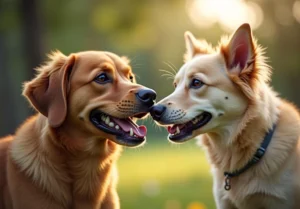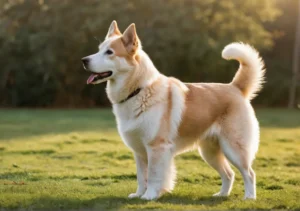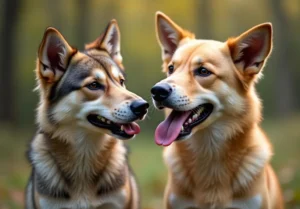Have you ever noticed that your cat doesn’t seem to recognize your face the same way a dog might? It’s a common observation among cat owners, but have you ever wondered why this is the case? Let’s explore the fascinating reasons behind why cats don’t recognize faces.
Cats have a different way of perceiving the world compared to humans and some other animals, which affects how they recognize faces. While they may not recognize faces in the same way we do, there are several factors at play when it comes to why cats don’t recognize faces.
Differences in Visual Perception
Cats have a unique way of looking at the world, quite different from how we humans perceive things. Their vision is specialized for hunting, which means they excel at detecting movement and have superior night vision compared to us. This specialization in their vision affects how they see faces. While humans rely heavily on facial recognition for social interactions, cats prioritize other sensory cues like scent and sound. So, when your cat doesn’t seem to recognize your face, it’s not because they are being aloof – they simply have a different way of processing visual information.
Furthermore, cats have a wider field of view than humans, allowing them to take in more information from their surroundings at once. This wider field of view may contribute to why they may not focus as much on individual faces, as they are constantly scanning their environment for any potential threats or prey.
To truly understand how your cat sees the world, it’s essential to consider their unique visual perception and how it shapes their interactions with the environment around them.
Lack of Social Hierarchy
Unlike dogs, which thrive in packs with a clear social hierarchy, cats are solitary animals by nature. This solitary behavior can influence their recognition of faces and social cues. While cats can form social bonds with humans and other animals, they don’t rely on facial recognition as a primary means of communication or social interaction.
In the wild, recognizing individual faces may not be as crucial for survival as it is for more social species. Instead, cats rely on other cues, such as body language, scent, and vocalizations, to navigate their social interactions. This reliance on different sensory inputs means that facial recognition may not be as important for cats as it is for species that live in larger social groups.
Understanding the natural behavior of cats as solitary hunters sheds light on why they may not prioritize face recognition as much as humans or other social animals do. By recognizing and respecting these differences, we can build stronger connections with our feline companions based on their unique social needs and preferences.
Primacy of Scent
Cats rely heavily on their sense of smell to identify individuals. Their keen noses can pick up scents that are unique to each person, making scent recognition more important than visual recognition. So, don’t be offended if your cat seems to care more about sniffing you than looking at your face!
Limited Socialization
Early socialization plays a crucial role in a cat’s ability to recognize faces later on. Cats that have had limited exposure to different people during their critical development period may struggle with recognizing faces compared to cats that have been well-socialized. So, if you want your cat to be more adept at recognizing faces, make sure to introduce them to various individuals from a young age.
Additional Insight:
Keep in mind that some cats are just naturally more independent and may not prioritize facial recognition as much as other animals. This doesn’t mean they don’t appreciate your presence; they just have different ways of showing it.
Genetic Factors
Genetics may play a role in why cats don’t recognize faces like other animals. Studies suggest that cats’ brains prioritize other senses such as smell and hearing over vision, leading to less emphasis on facial recognition. Cat breeds like Siamese and Persian may have specific genetic differences affecting their facial recognition abilities. Additionally, the genetic makeup of cats may have evolved to prioritize survival skills over facial recognition, making them rely more on other cues to navigate their environment.
Adaptive Behavior
Cats’ behavior and evolutionary traits have contributed to their lack of emphasis on facial recognition. Cats are solitary hunters by nature, unlike social animals like dogs, which rely heavily on facial cues for communication and bonding. Instead, cats prioritize body language, scent, and vocalizations for interaction and recognition. This behavior stems from their evolutionary history as solitary predators, where facial recognition was not a critical survival skill. This adaptive behavior has persisted through generations, shaping how cats perceive and navigate their world.
Additional Insight:
- Cats’ lack of emphasis on facial recognition may also be due to their ancestral roots as nocturnal predators. Cats evolved to hunt in low-light conditions, relying more on motion and scent rather than detailed visual recognition. This history of nocturnal hunting may have influenced their brain’s prioritization of sensory cues other than facial features.
Interesting Facts About Cats’ Recognition Abilities
Did you know that cats have a unique way of perceiving faces compared to humans? While we rely heavily on facial features to identify individuals, cats focus more on scent and body language. This is why your feline friends might not immediately recognize your face when you walk into a room.
In fact, cats have a keen sense of smell that allows them to distinguish between different individuals based on their scent. They rely on pheromones and other olfactory cues to identify familiar faces, making facial recognition less important to them.
Another interesting fact about cats is that they prioritize body language when interacting with humans. They pay close attention to posture, gestures, and movement to understand our emotions and intentions. This means that cats might not need to rely on facial recognition as much as we do to communicate and bond with their human companions.
By understanding these fascinating insights into cats’ recognition abilities, we can develop a deeper appreciation for their unique ways of perceiving the world around them. The next time your cat seems indifferent to your face, remember that they are simply viewing you through a different lens based on their natural instincts and preferences.
Lastly, for more information on how cats perceive faces and recognize individuals, check out this helpful resource from the American Veterinary Medical Association: AVMA – Understanding Cats’ Behavior and Communication.
Now you can see your feline friend in a whole new light, appreciating their unique perspective on facial recognition and building a stronger bond based on mutual understanding.
Alex, a passionate animal lover, has experience in training and understanding animal behavior. As a proud pet parent to two dogs and three cats, he founded AnimalReport.net to share insights from animal experts and expand his knowledge of the animal kingdom.




